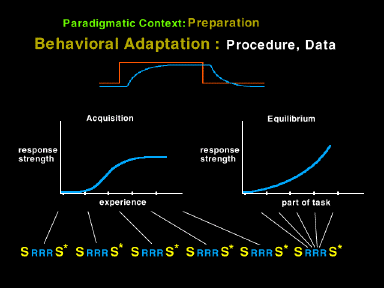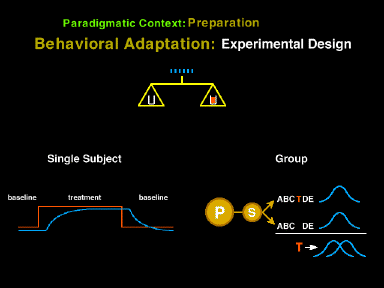

 Slide 1-19
Slide 1-19
The intent is to study behavioral adaptation or learning. Therefore, a task is presented repetitively and the adaptation to that task, or the stages in the acquisition of the solution, is documented (how the animal comes to behave appropriately).
Alternatively, the equilibrium state or solution itself is documented (in this example: the rate increase across the waiting period.). The answer to "how does the animal adapt?" is both the time course of that adaptation (left frame), and the equilibrium solution (right frame).
 Slide 1-20
Slide 1-20
An experiment is designed to maximally reveal some relationship, while minimizing the effects of confounds (such as removing the effects of temperature on a measuring tape.) An experiment is therefore much like choosing the best camera angle, path through an obstacle course, or the truly guilty criminal. You must detect the true cause of an effect and not be confused by a likely suspect.
Researchers are typically only interested in the effects of a particular portion of the environment on behavior The problem is that that portion of the environment cannot be measured in isolation. This is much like the fact that the weight of water must be isolated from the weight of its container. This is typically done by canceling the effects of the container by placing it alone on a second pan which subtracts that weight from the other pan. A baseline condition or a control group serves the same purpose in an experiment. The researcher is only interested in the difference.
More information on this topic is available here.